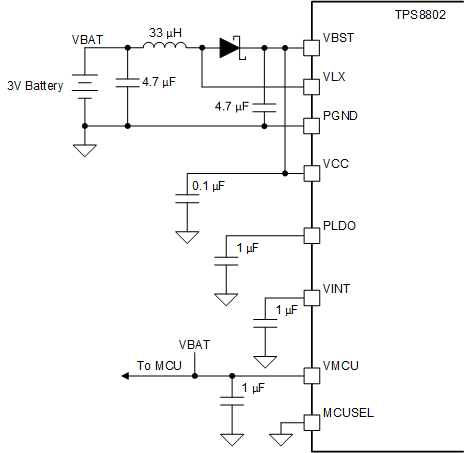SLVAET3 October 2021 TPS8802
- Trademarks
- 1Introduction
- 2System Architecture
- 3Current Consumption
- 4System Power Calculation and Measurements
- 5Summary
- 6References
2.2.1 Connecting VCC to VBST
When using the TPS8802 with a 3-V battery, the boost converter can be used to power the horn, use the battery test load, and power a blue LED. The TPS8802 automatically enables the boost converter on power-up when over 2.0 V is applied to VCC. Connecting VCC to VBST allows the boost converter to provide the minimum 2.6 V required on VCC with a battery voltage as low as 2.0 V. Connecting VCC to VBST increases the usable voltage range of the battery, improving the battery life. During operation, the TPS8802 VCCLOW_BST feature can be used to automatically enable the boost converter when the VCC voltage drops below 2.4 V and disable the boost converter when the VCC voltage is above 2.5 V. The VCCLOW_BST feature sustains the VCC voltage above 2.4 V with low power consumption. The functional performance is unaffected when the VCC voltage is between 2.4 V and 2.6 V, although parametric performance may be affected.
 Figure 2-1 TPS8802 Power Connections with VCC Connected to VBST
Figure 2-1 TPS8802 Power Connections with VCC Connected to VBST